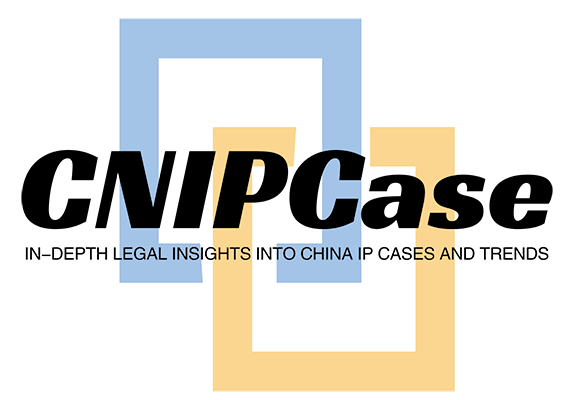In recent years, the increase in trademark registrations in China has led to some concerning trends, such as registration without use, malicious preemptive registrations, and trademark hoarding for speculative purposes. This has resulted in a significant number of idle trademarks, which not only waste resources but also hinder some enterprises from registering their desired brands.
The newest wave in China Trademark Law practice highlights the mantra of register to use, while also implementing measures to curb the unscrupulous accumulation of trademarks. This approach aims to tackle the very foundations of trademark issues head-on. It is crucial for trademark owners in China to keep up-to-date with the evolving legal and policy landscape in China trademark law practice, and to grasp the practical methods for a better trademark protection in China.
Addressing Trademark Challenges and Public Concerns
The introduction of the new usage requirement is closely tied to the major challenges that have emerged in China's trademark system in recent years. Official reports show that there are more than 40 million valid registered trademarks in China, many of which are "registered but not utilized." These unused trademarks create significant obstacles for business trying to register new trademarks. Furthermore, issues like infringement and trademark hoarding, including the malicious registration of public resources, have become more common. For instance, some industry participants have engaged in aggressive preemptive trademark registrations related to geographical indications, disrupting market order.
These problems have exposed the limitations of the existing Trademark Law, which has been criticized for prioritizing registration over actual usage. This focus has made it challenging for consumers to lodge complaints, increased the number of infringement cases, and raised the costs associated with protecting rights.
Strengthening the Obligation to Use Trademarks
The main objective of the new trademark practices is to emphasize "use," promoting the registration and safeguarding of trademarks by those who truly require and use them, while also freeing up resources by removing "inactive trademarks." The recently released draft of the new trademark law specifies comprehensive requirements and restrictions related to the use of trademarks throughout the application, registration, and rights protection stages.
1. Application Phase
Applicants are required to affirm that the trademark will be actively used in relation to the specified goods or services. This affirmation emphasizes the necessity for registered trademarks to be in active use. Applicants must either be currently using the trademark or pledge to do so; failure to comply may lead to scrutiny from the examining authority.
2. Post-Registration Responsibilities
Trademark holders must regularly report to the Trademark Office about the use of their trademarks for the approved goods/services every five years. Specifically, they must submit proof of use or a legitimate reason for non-use within 12 months after the 5th, 10th, and 15th anniversaries of their registration. Non-compliance could result in the cancellation of their trademark rights. The State Intellectual Property Office may conduct random checks to confirm the reported usage, and any false statements could result in the trademark being revoked.
3. Improvements to the Revocation System
The draft retains the current rule of "revocation for non-use for three consecutive years" but adds new grounds for revocation to safeguard public interests. For example, if a registered trademark misrepresents product quality or origin, or if its use adversely affects public interests, the relevant authority may revoke the trademark on its own initiative. The draft also introduces new grounds for revoking collective and certification trademarks, intensifying efforts to eliminate "registration without use" or "misuse" of trademarks.
4. Ban on Duplicate Registrations
To address "relay hoarding," the draft establishes a clear rule against duplicate registrations. An applicant is prohibited from submitting multiple applications for the same mark for the same goods or services. This measure aims to prevent malicious duplicate applications that have been used to avoid cancellation or invalidation.
5. Stricter Penalties for Malicious Cybersquatting
While emphasizing the obligation to use trademarks, the draft also increases penalties for malicious registration practices. It raises the maximum fines for bad faith trademark registrants and introduces provisions for compensation claims from trademark owners affected by such registrations. Additionally, there are specific rules regarding the transfer of preemptively registered well-known trademarks, requiring the infringer to either transfer the trademark to the rightful owner or compensate for any losses incurred.
Implications for Business and Trademark Applicants
The recent practice changes have significant implications for business owners and trademark applicants, highlighting the importance of actively using and managing trademarks throughout the entire process, from application to ongoing upkeep. Specifically:
1. Awareness and Evidence of Use
Businesses often do not have dedicated teams to handle trademark issues and may neglect their trademarks after they are registered. With the new amendments, businesses must actively launch products or services within five years and gather evidence of use, such as sales receipts, advertisements, and contracts. This increases the burden of proof for trademark holders and creates a "moral pressure" on those who have not utilized their trademarks.
2. Adjusting Application Strategies
In the past, applicants might have submitted numerous trademark applications across different classes in anticipation of future needs. Now, they should adopt a more strategic approach, concentrating on key trademark categories that align with their business objectives and avoiding unnecessary registrations. For important brands, it is crucial to clearly display trademarks on product packaging and in marketing efforts to demonstrate traceable usage.
3. Enhancing Protection and Utilization
Although these regulations may lead to higher short-term management costs (such as hiring agents for documentation assistance), they ultimately benefit businesses that are committed to legitimate practices. By eliminating trademarks that are hoarded without intent to use, more quality trademark resources will be available for registration, making it easier for genuine users to obtain valuable trade names. The mandatory use system will also motivate businesses to improve their brand development and trademark management strategies.
Conclusion
In conclusion, the current administrative and judicial trend and practice send a clear message that trademark rights are meant for actual use, and registration without a legitimate purpose will have repercussions. This change is more advantageous for businesses that focus on legitimate operations and fosters positive incentives for the overall market.
Should you have any inquiries or require any support in this matter, please contact liangwen@zhonglun.com, and we would be happy to assist.


